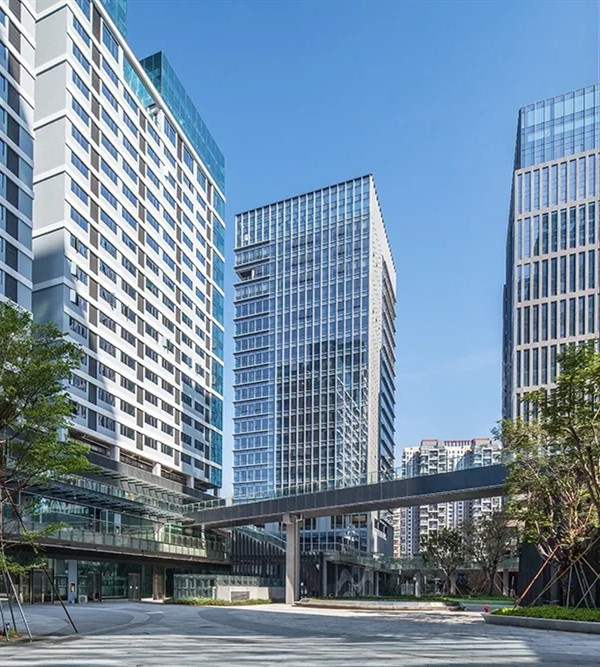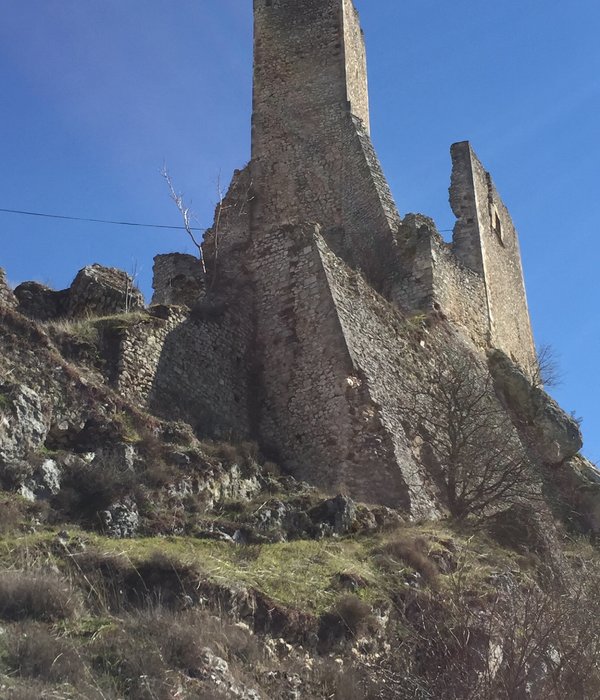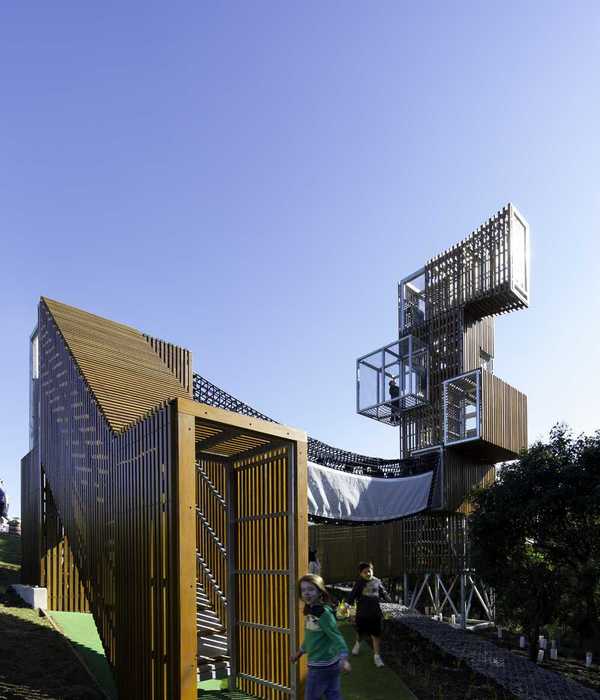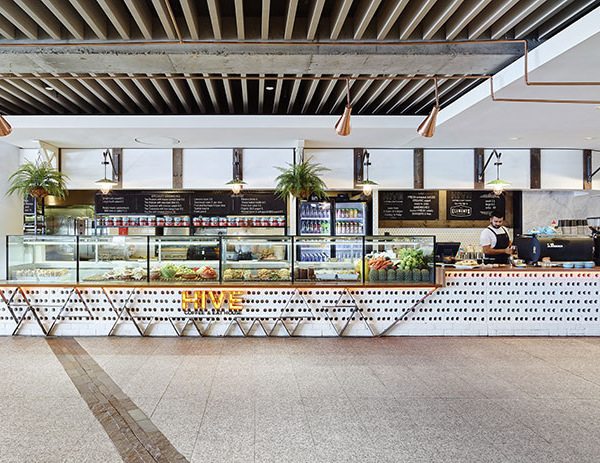匈牙利文学广场 | 从遗忘角落到文化地标

From a leftover space to the square of Hungarian Literature
Located in the elegant and densely built district of Terézváros, along the UNESCO heritage Andrássy Avenue, the small Jókai square has been erased from the people’s mental map mainly due to lack of function or strong personal connection with the neighbourhood.
The square renovation aims to create a space that people relate to and strengthens the district’s unique character, both visually and mentally.
Terézváros is a cultural hub and interesting touristic hotspot, but foremost a residential area. It has been a home to countless writers and poets throughout history, who lived and produced their work from local cafes and publishing houses.
Jókai Square’s design aimed to celebrate the Hungarian literature scene from the writers to the readers, acknowledging every word as a piece of art. The design’s attention to detail, the needs of the local community, changing climate and nevertheless tangible presence of literature are fused into complex design, that attracts tourists while offers an inspiring community space.
The design was fitted to the historic space structure, the existing and valuable trees while allowing the vision to flow through the spaces. The main axis connects the sculpture of Jókai Mór (Hungarian nobleman, novelist, dramatist and revolutionary), the bespoke fountain of literature and the main event space. At the same time the square can be divided functionally into two main areas. First one is the façade of the square towards the Andrássy avenue, with the scaled-up statue of Jókai Mór. The statue separates the avenue’s representative walkway from the square’s second functional part. Behind the Jókai monument the square’s real heart can be found. Series of small seating spaces, playful elements and references to different literati and their work are carefully arranged along the main axis. The axis ends with a small open area where small events and performances could be held including literary events and small concerts.
Part of the design task was to rethink the parking facilities however the design achieves much more than just organised parking. Through the use of high-quality materials, the shared surfaces achieve strong visual connection that holds together and optically enlarges the space from façade to façade.
The selection of planting species visually elevates the square in comparison with the dense urban fabric. Through the use of low maintenance and suitable urban environment species the design aims to increase interest of the users as well as educate them about urban biodiversity and the importance of urban planting in the cities.
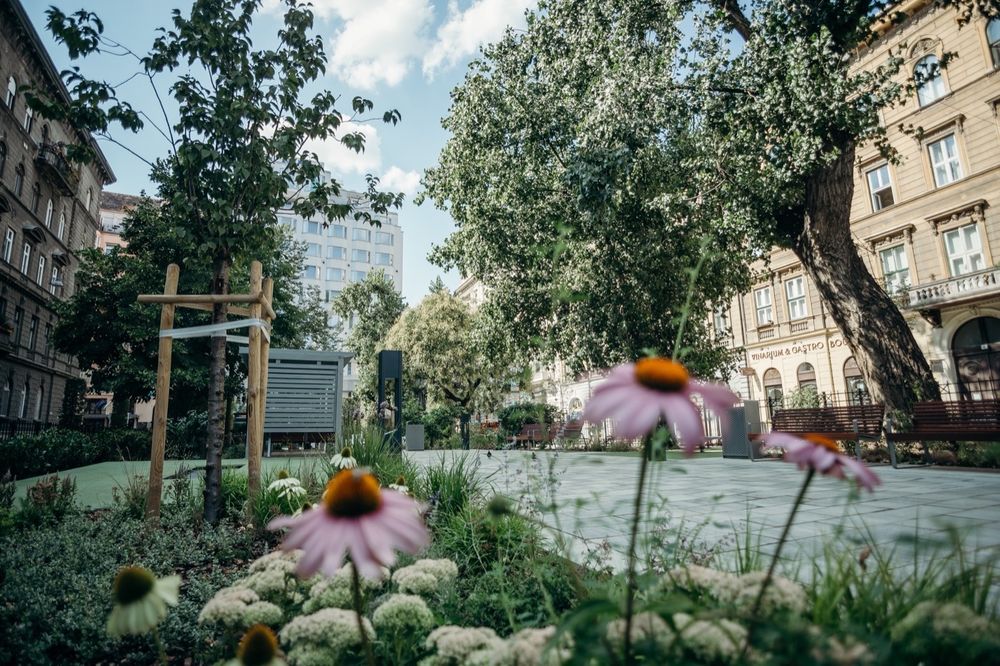

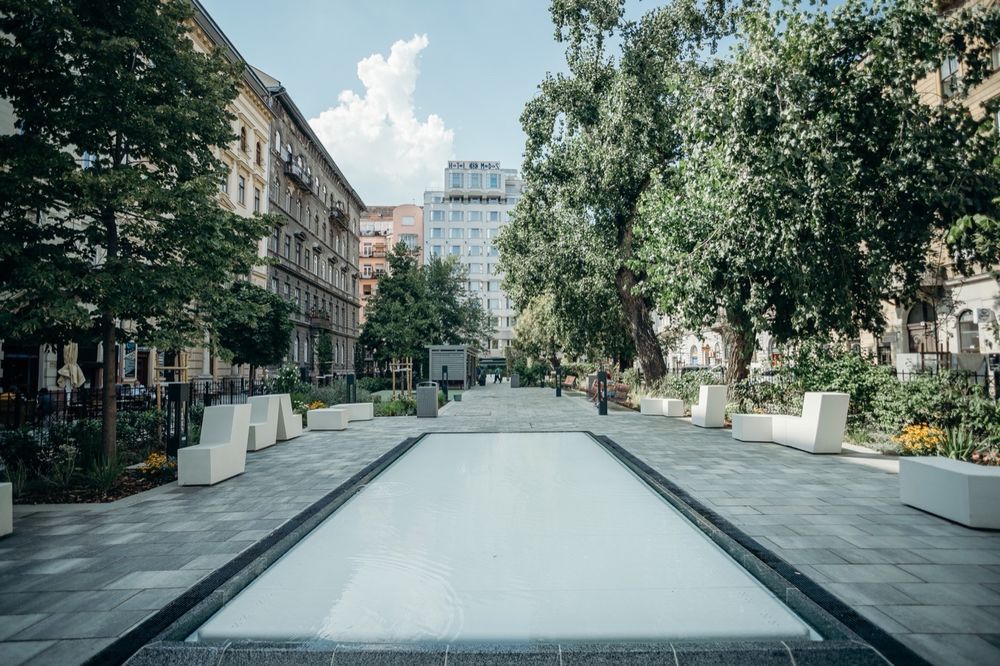




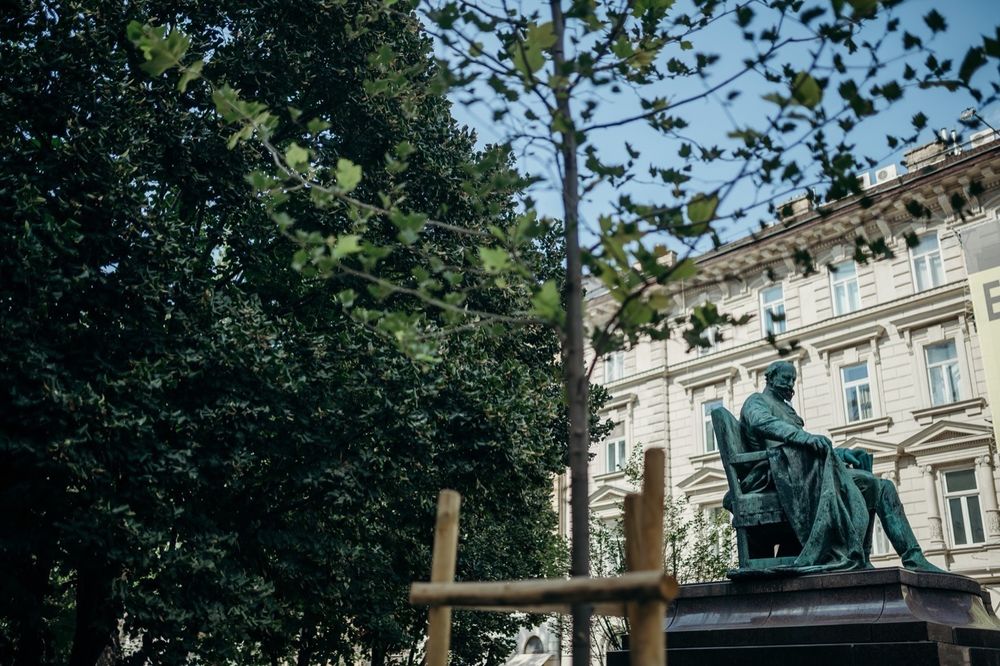

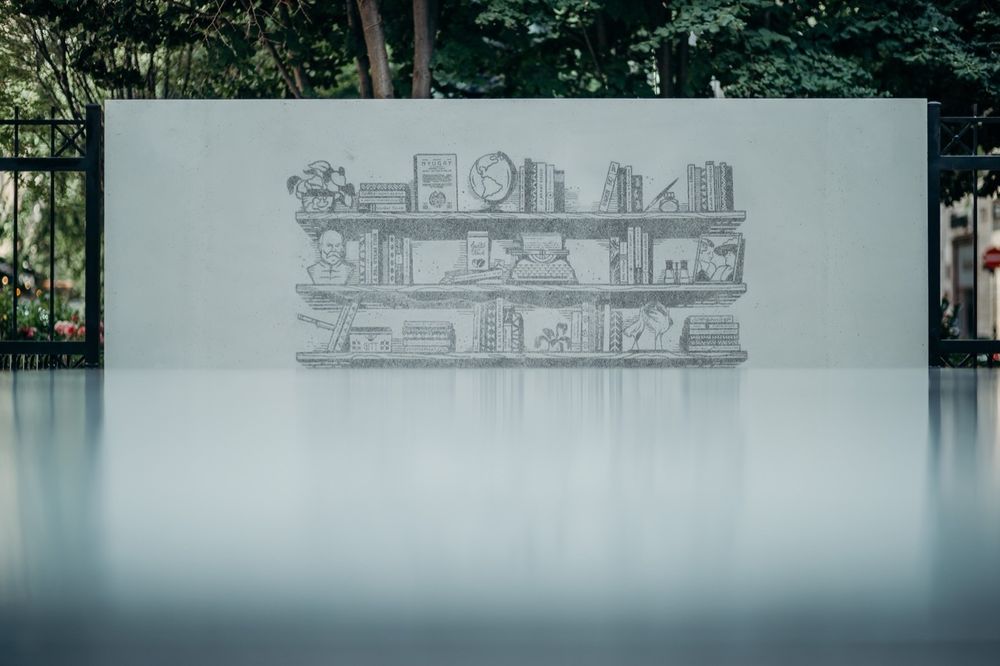


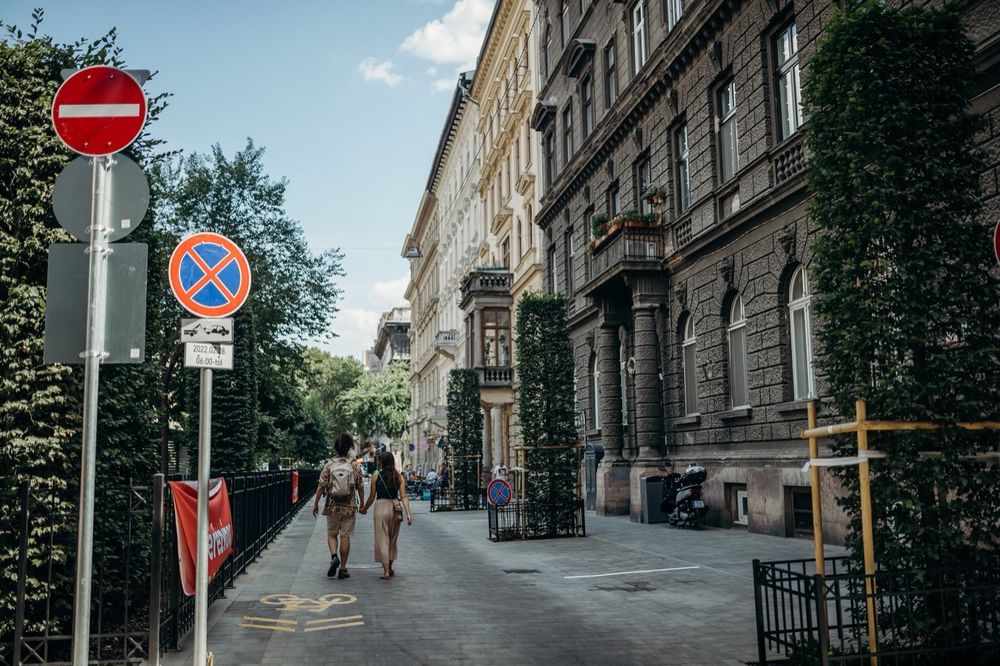


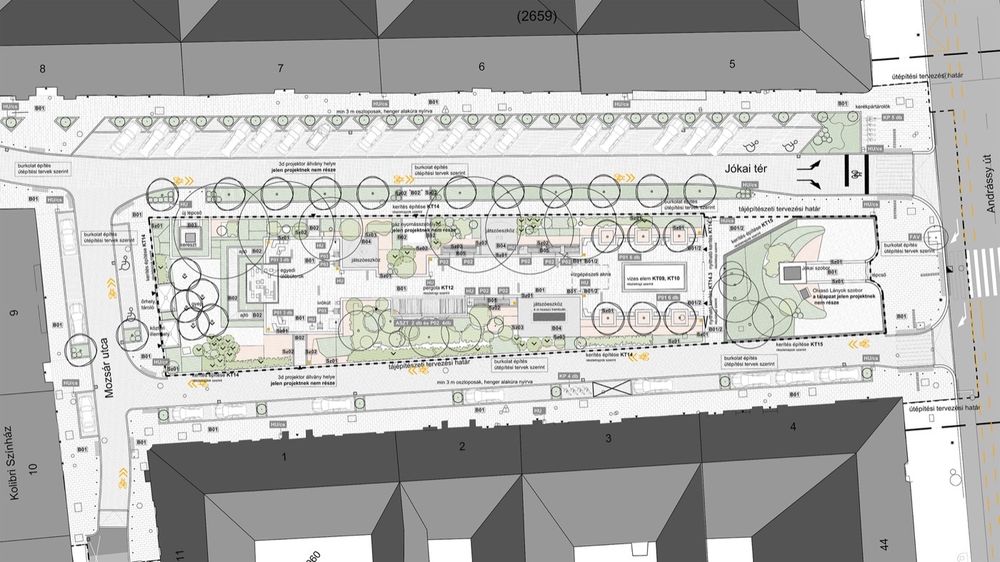

Role: Lead designer
Website: Project website
Design year: 2018
Year Built: 2022
Photographers: Attila Glázer, Rudolf Karancsi/képszerk.hu
Manufacturer of urban equipment: MMCITÉ, METALCO, KRION, HOFEKA
Manufacturer of playground equipment: Buglo, Urban Design, Eurotramp



